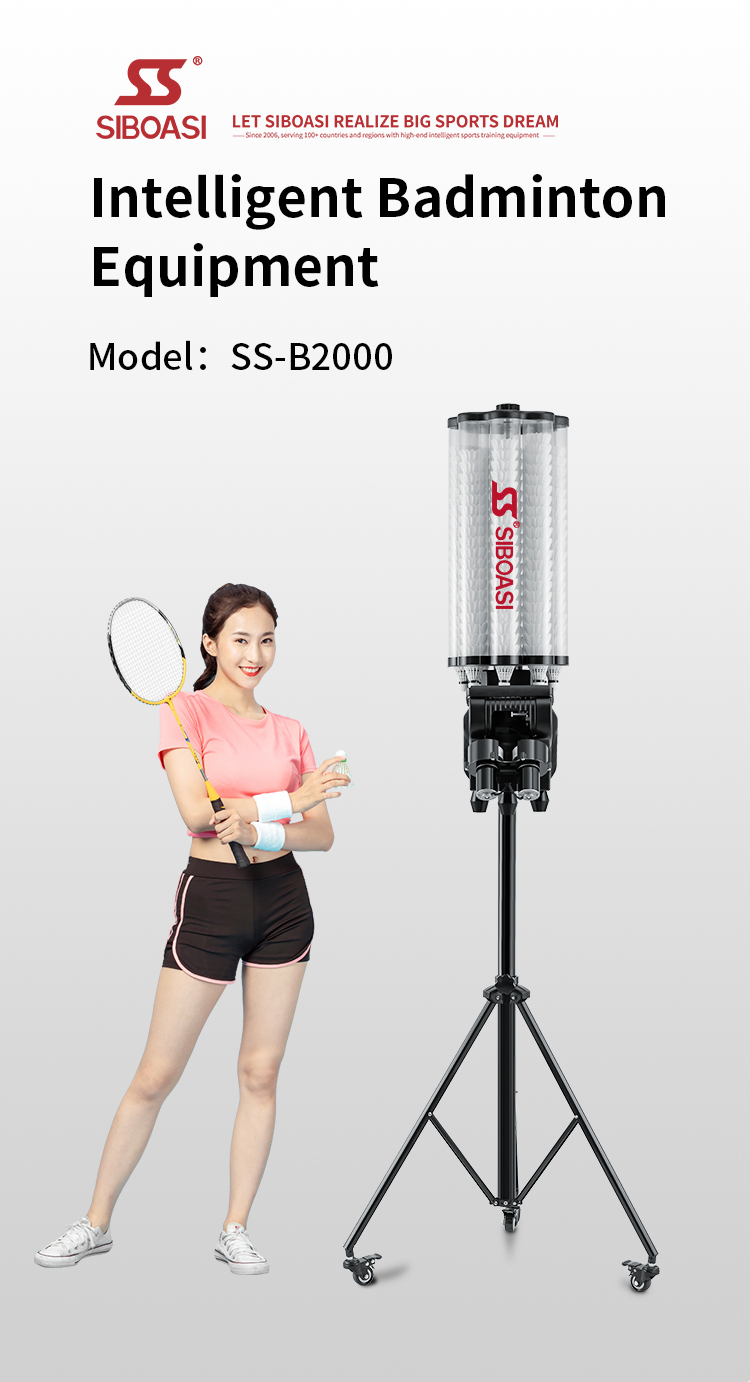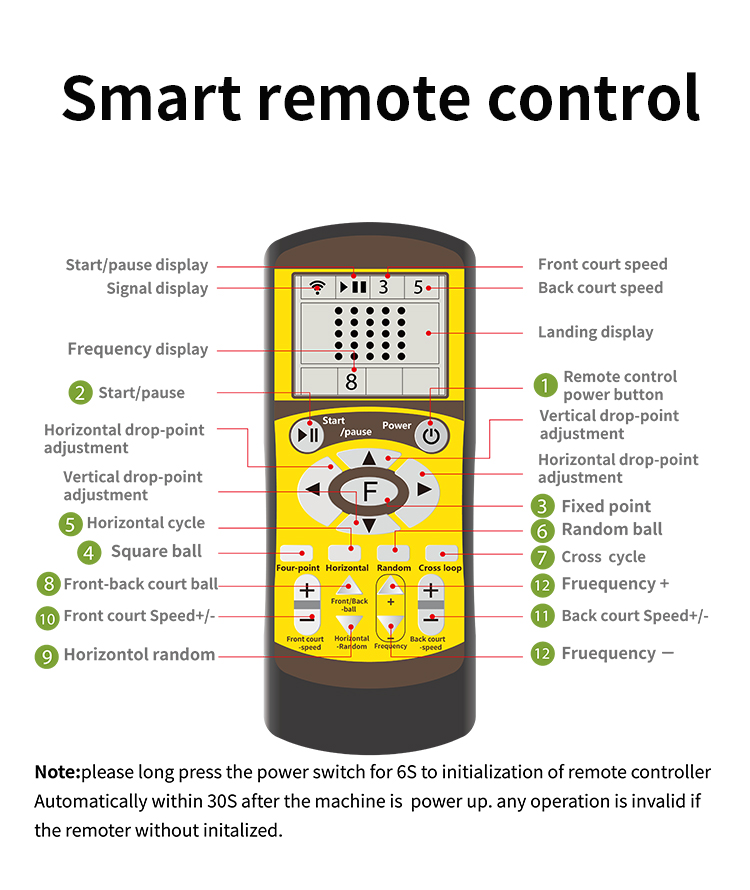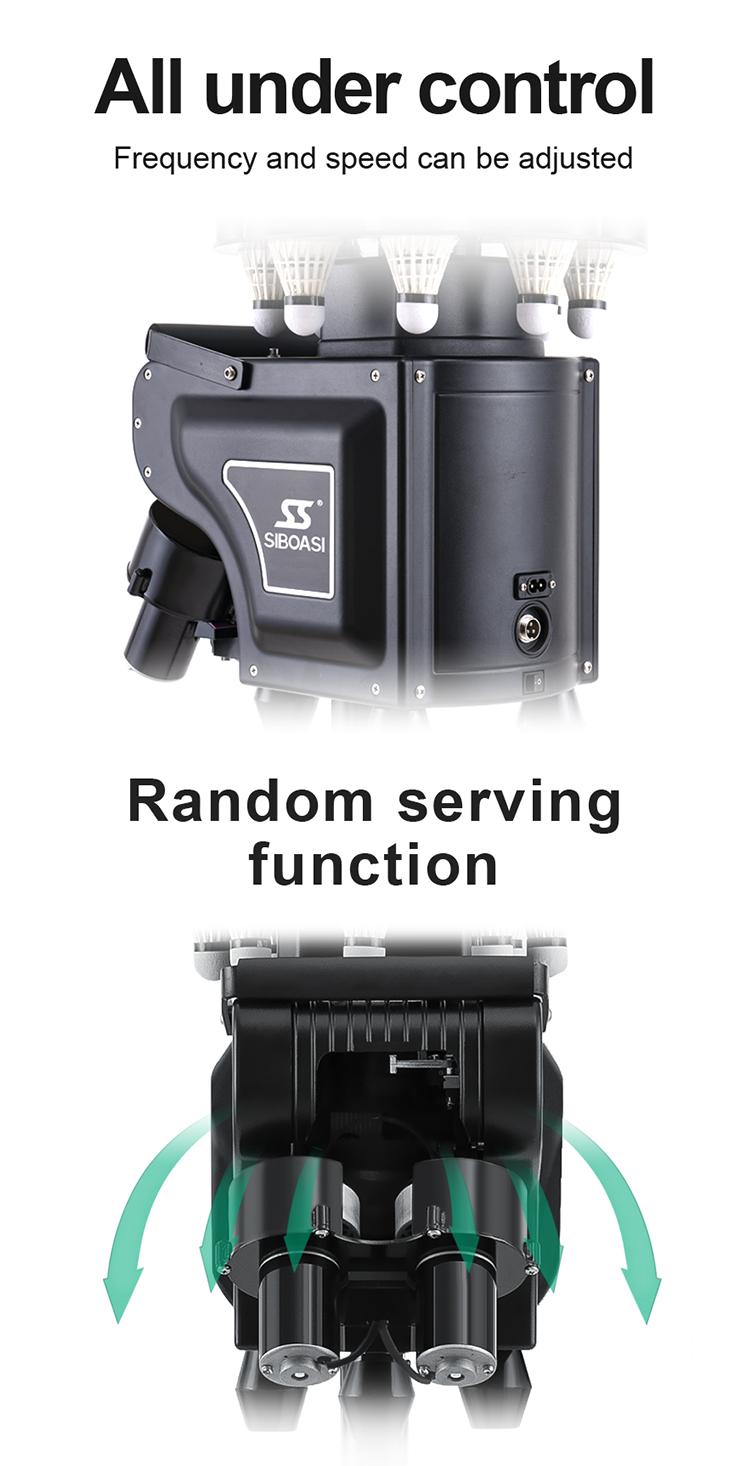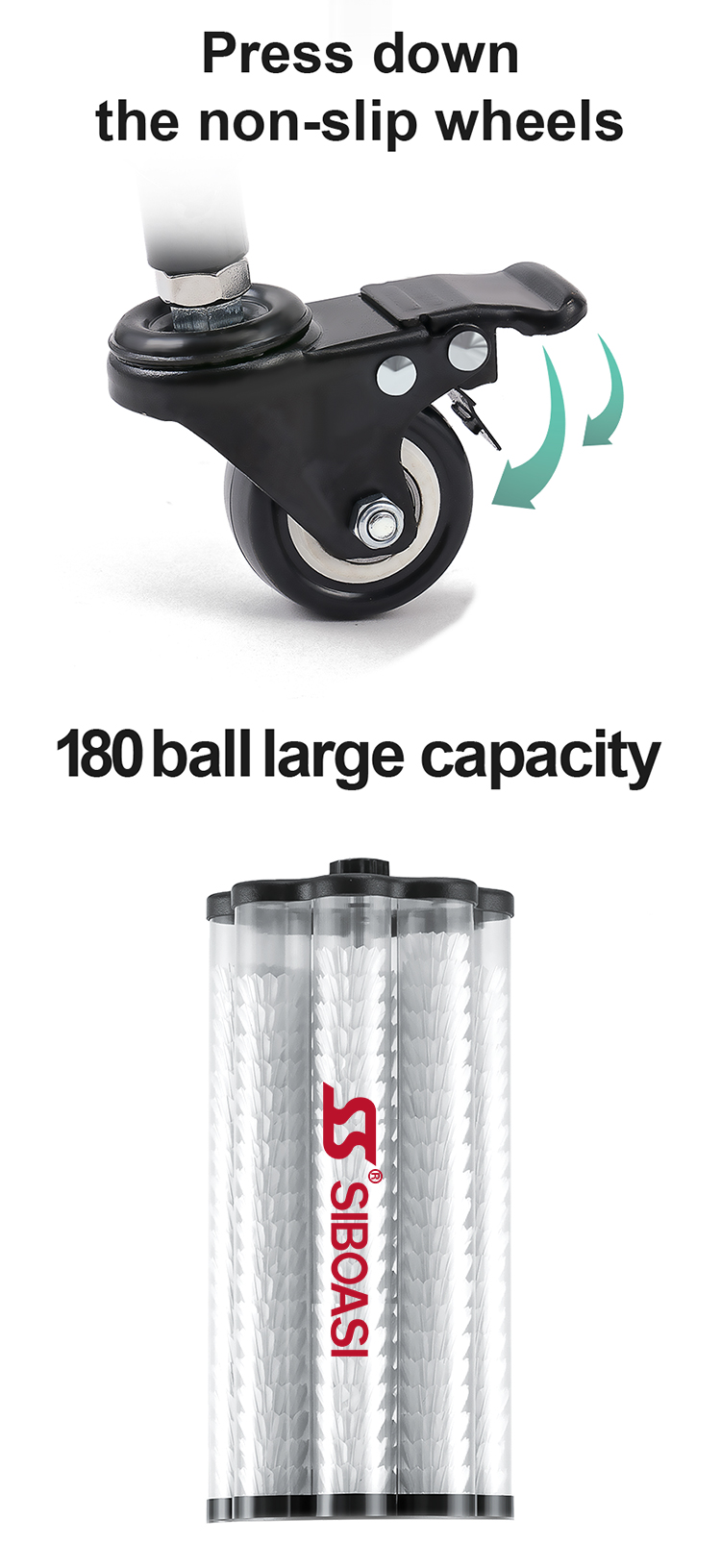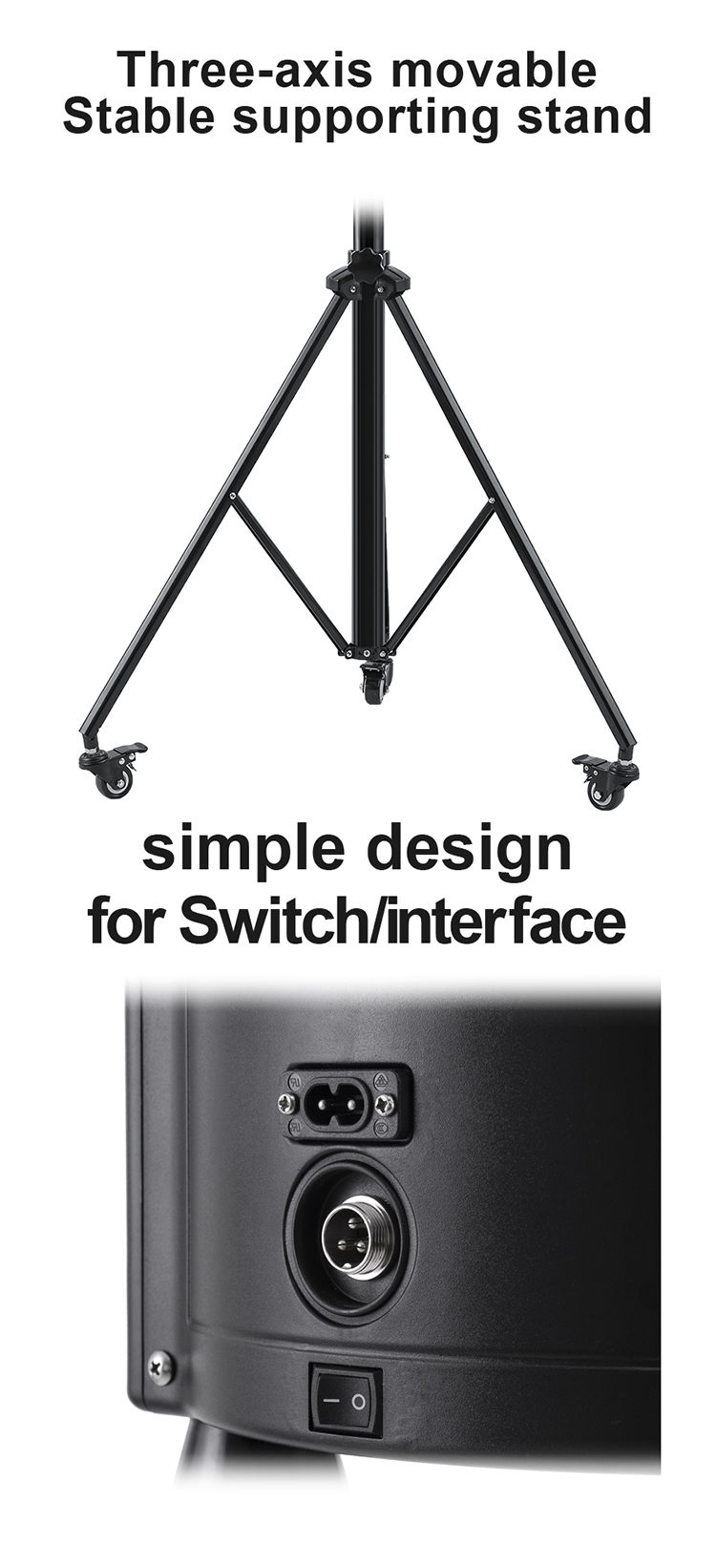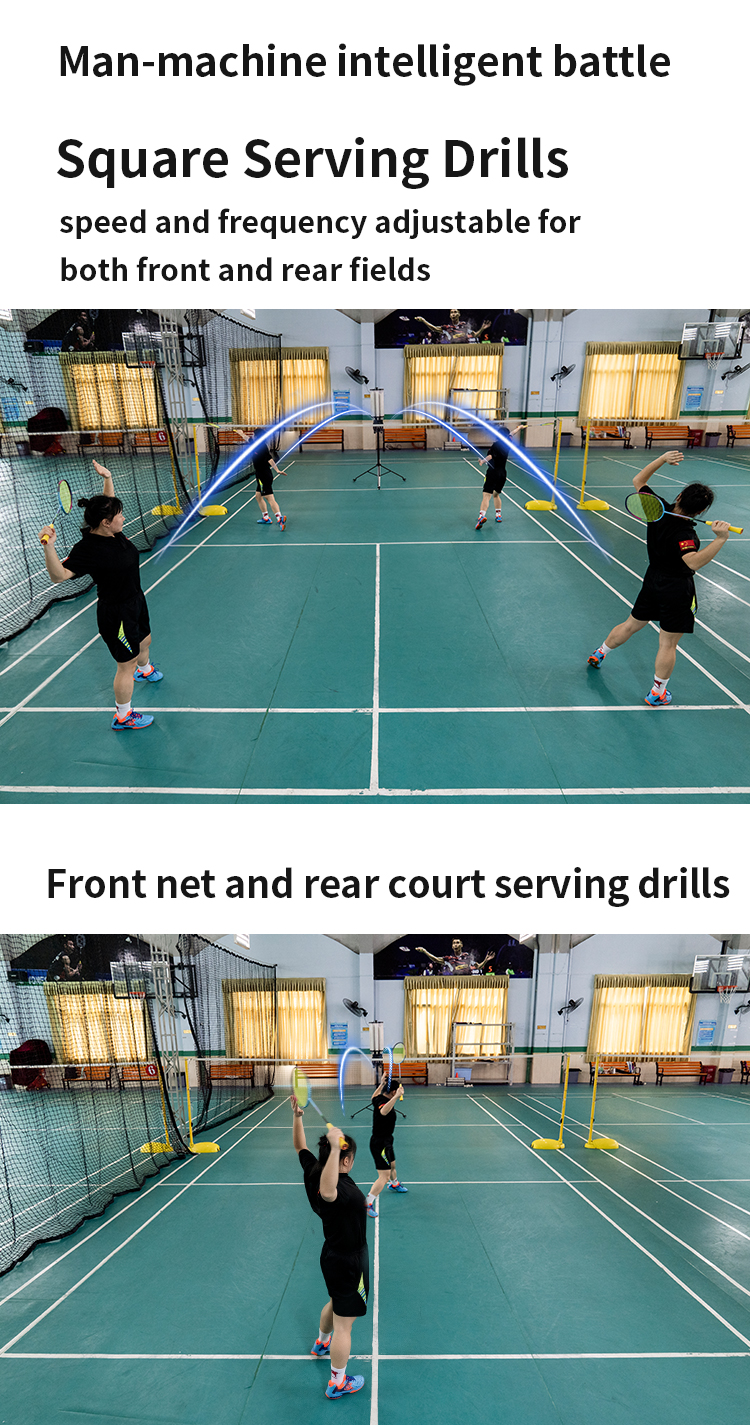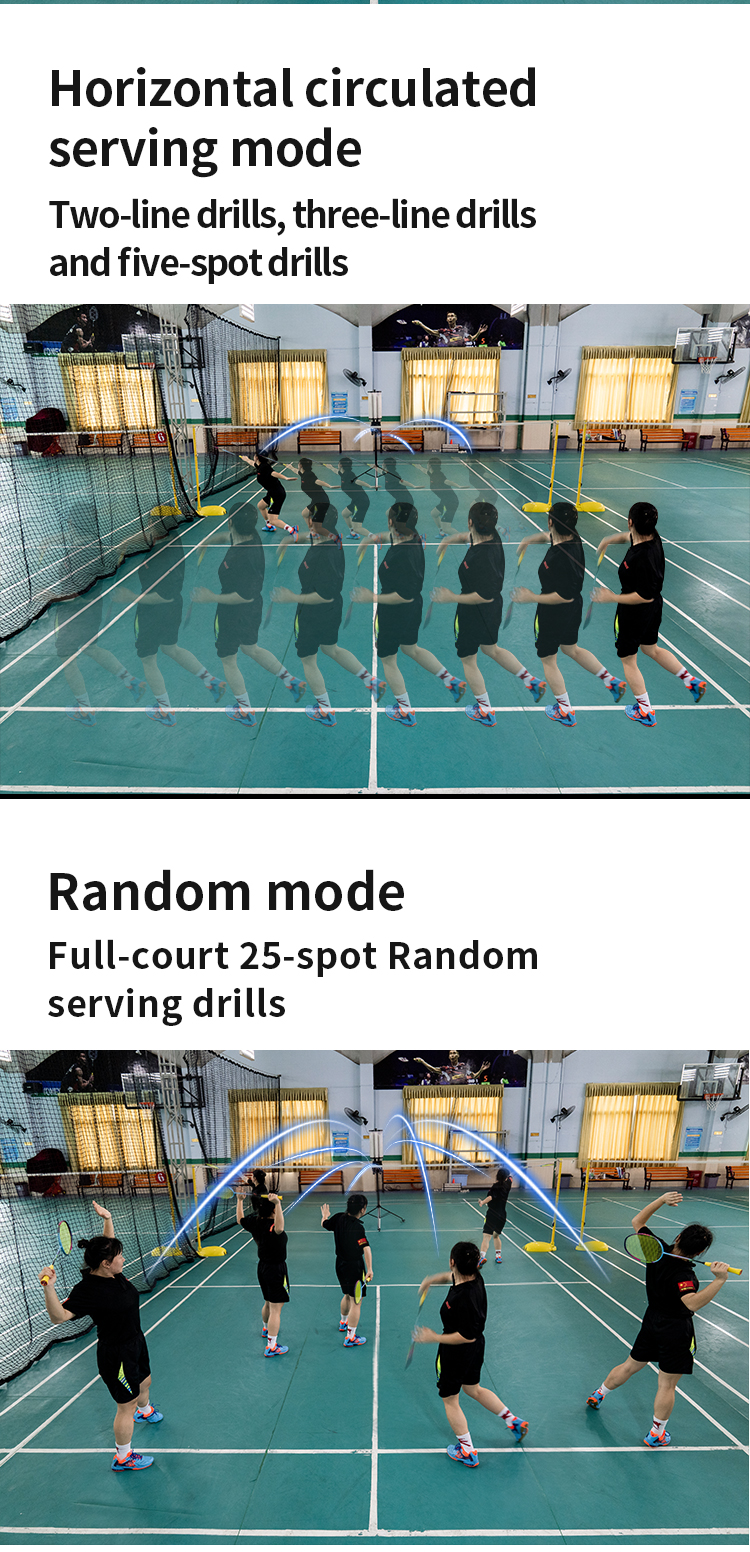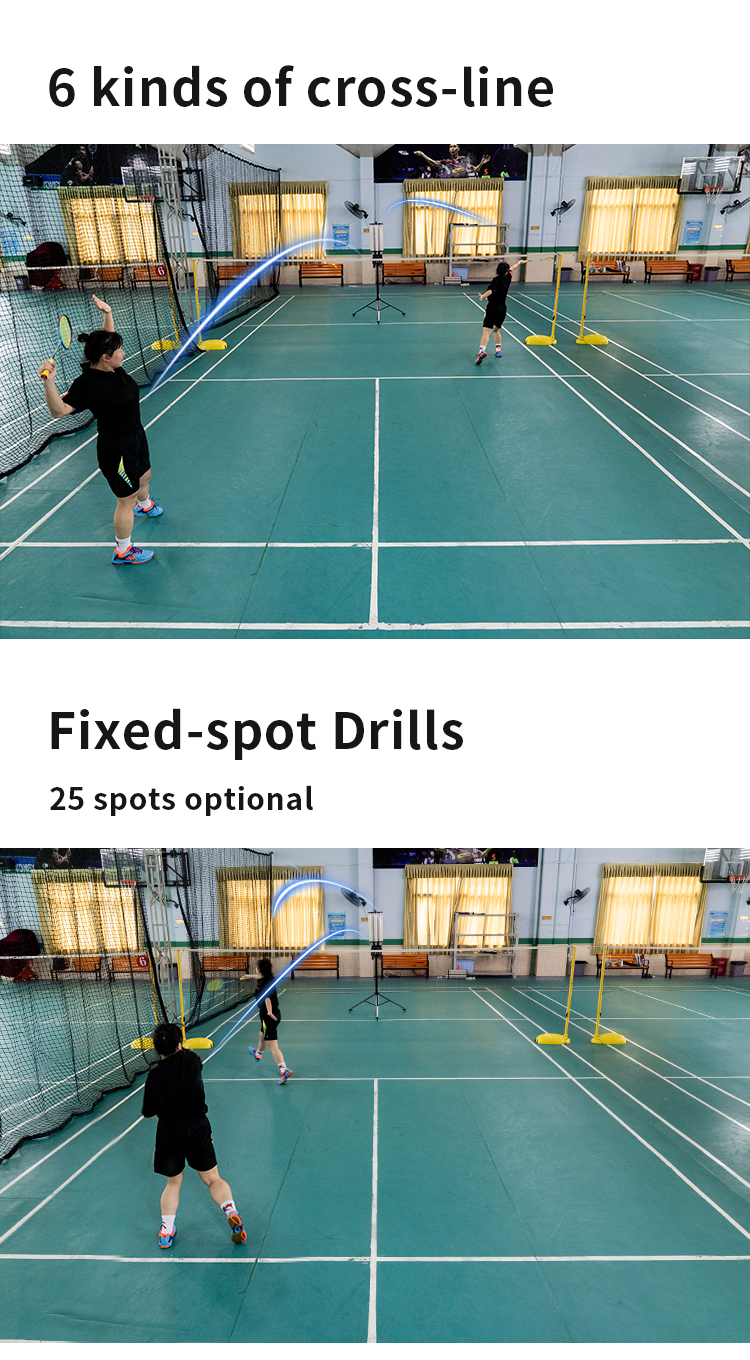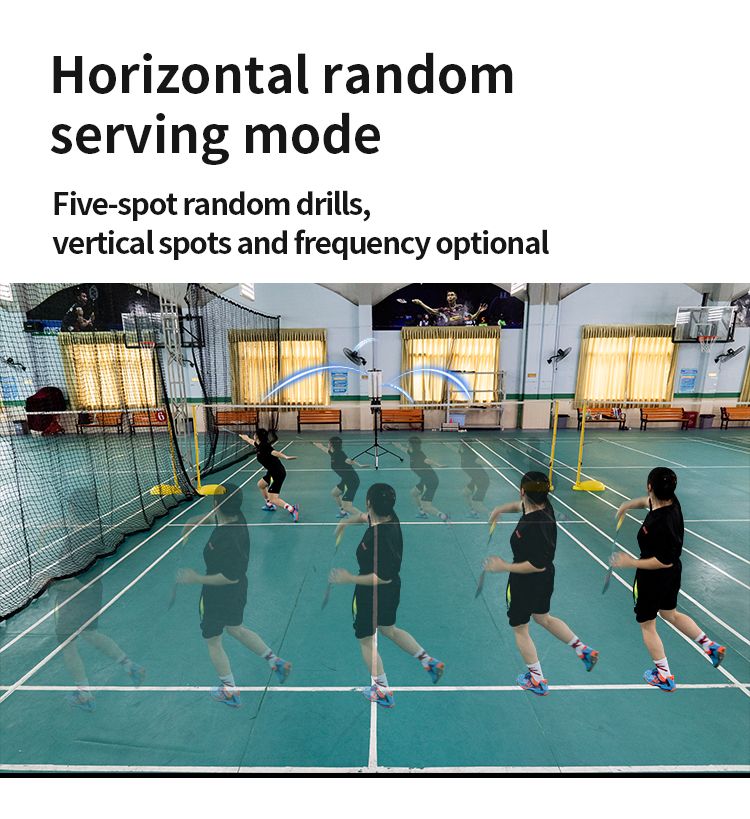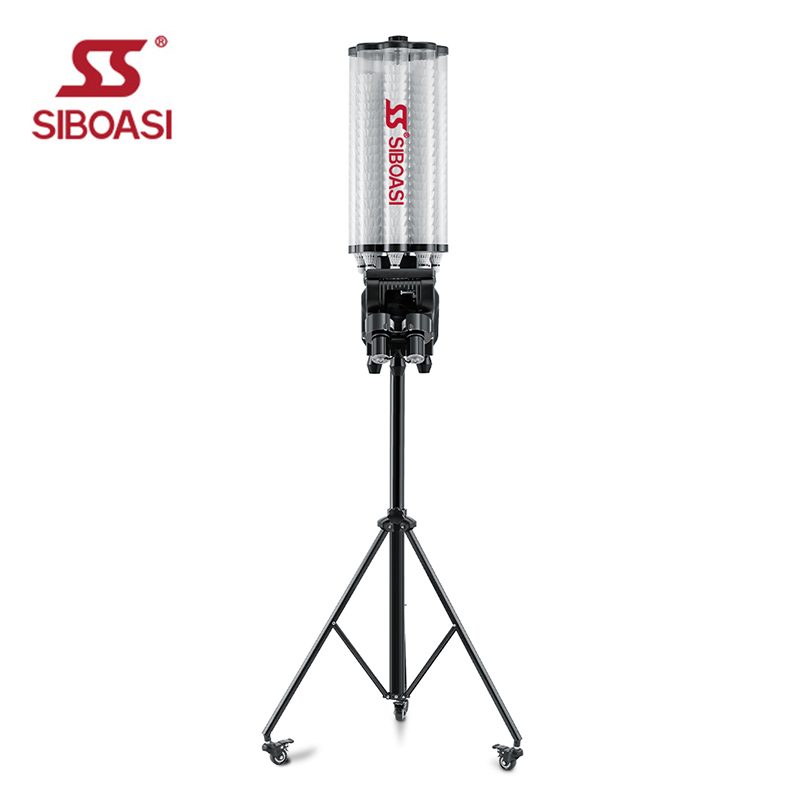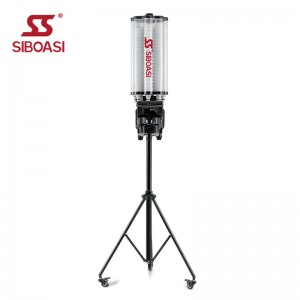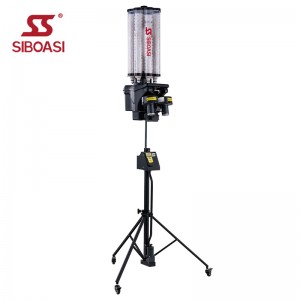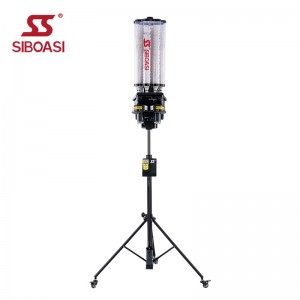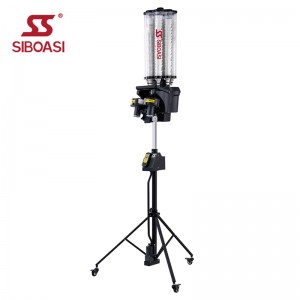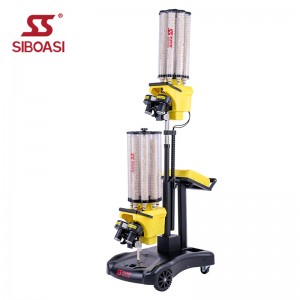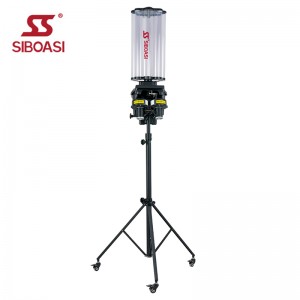SIBOASI mini badminton feeding machine B2000
Product Highlights:
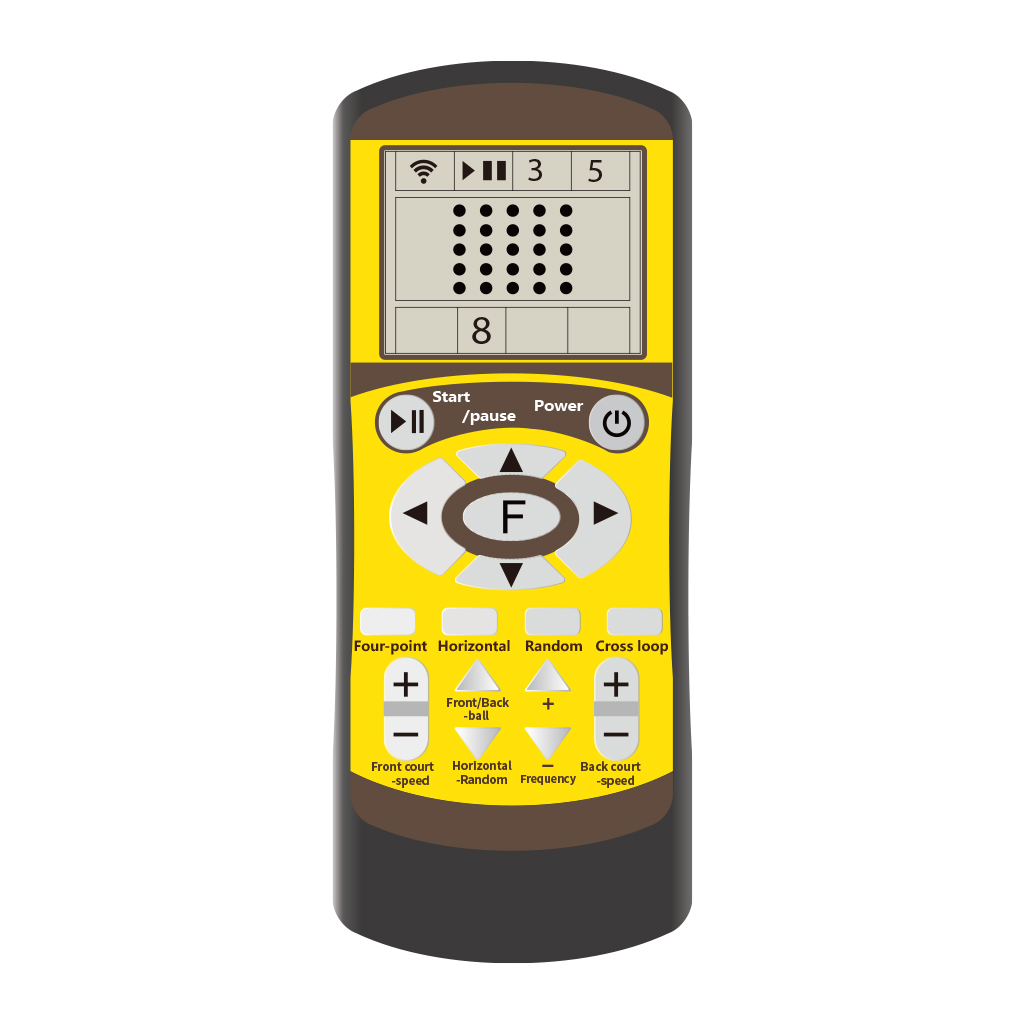
1. Intelligent serving, speed, frequency, horizontal angle, and elevation angle can be customized;
2. Special Four-corner drop point, two cross-line drills, simulation of real field training;
3. Two-line netball drills, two-line backcourt drills,backcourt horizontal random drills etc;
4. Frequency in breaking through 0.8s/ball, which quickly improves the players' reaction ability, judgment ability, physical fitness, and endurance;
5. Help players standardize basic movements, practice forehand and backhand, footsteps, and footwork, and improve the accuracy of hitting the ball;
6. Large capacity ball cage, serving continuously, greatly improves sports efficiency;
7. It can be used for daily sports, teaching, and training, and is an excellent badminton-playing partner.
Product Parameters:
| Voltage | AC100-240V 50/60HZ |
| Power | 300W |
| Product size | 122x103x210cm |
| Net weight | 17KG |
| Frequency | 0.8~5s/shuttle |
| Ball capacity | 180shuttles |
| Elevation angle | 30 degrees (fixed) |
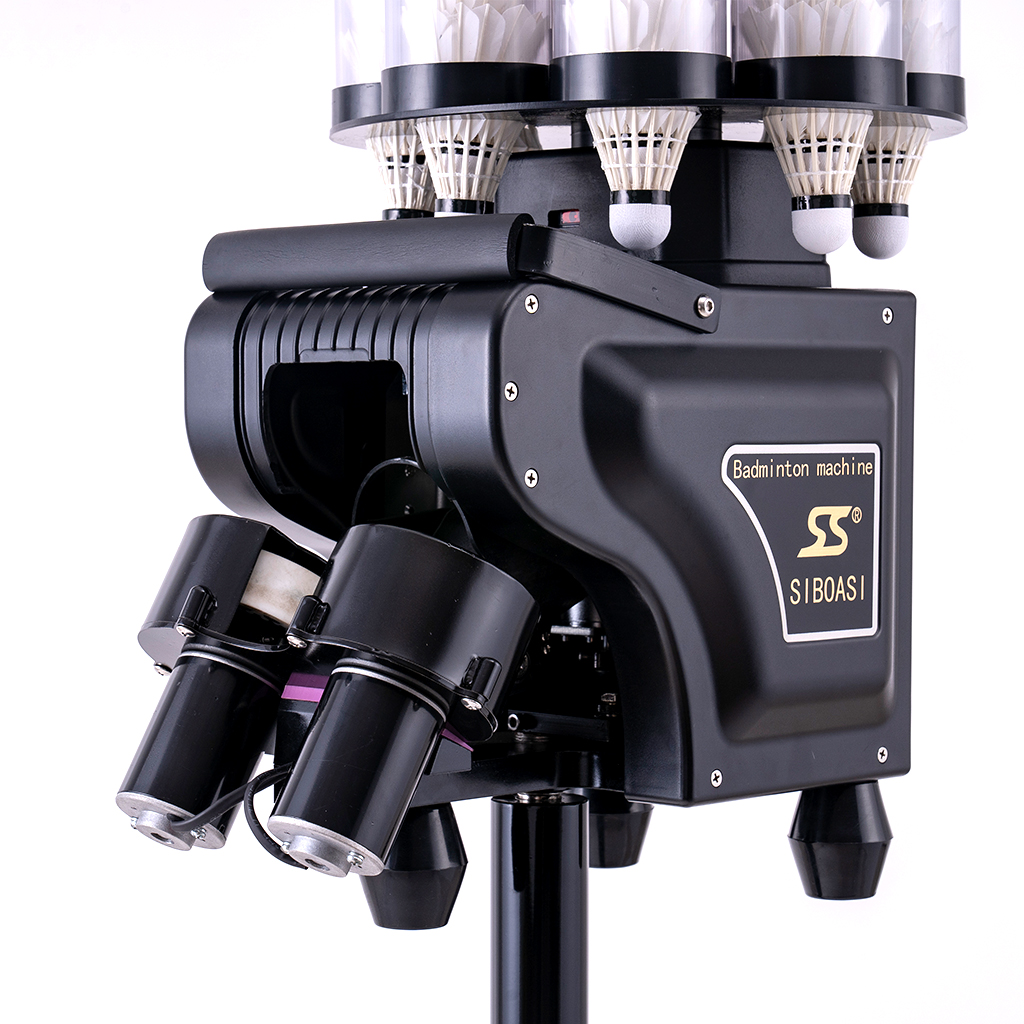
Why footwork is so important in badminton?
Footwork is crucial in badminton as it enables players to move quickly on the court, hit the ball and maintain good balance and stance. Here are some key aspects to focus on in badminton footwork:
Ready Position: Begin by teaching the players the correct ready position. This involves standing with your feet shoulder-width apart, your knees slightly bent, and your weight distributed evenly between your feet. This position allows the player to react quickly and move in any direction.
Steps: Emphasizes the importance of steps, which are small forward jumps taken before the opponent hits the ball. This preparation helps you generate explosive power and react quickly to your opponent's shots.
Quick Foot: Trains players in quick, light footwork. This means taking small, quick steps to maintain balance and agility. Encourage them to stay on tiptoes instead of being caught off guard so they can move faster.
Lateral Movement: Teaches players to move laterally along the baseline, midcourt or net to effectively cover shots. Players should lead with their outside foot when moving to the right and vice versa.
Back and forth movement: Train players to move back and forth smoothly to retrieve shots. When moving forward, the back foot should be pushed on the ground, and the front foot should land on the ground; when moving backward, the front foot should be pushed on the ground, and the back foot should land on the ground.
Side-to-side movement: Practice side-to-side movement with various exercises. Players should be able to move quickly from one side of the court to the other with ease to screen shots effectively.
Recovery Step: Teach players the recovery step to use immediately after hitting the ball to quickly return to the ready position. After each shot, the player should quickly reposition and return to the ready position.
Cross Steps: Introduce cross steps for a wider range of motion on the court. When players have to move quickly over long distances, encourage them to cross one foot behind the other to move efficiently.
Prediction and Step Timing: Trains players to predict their opponent's shots by observing their body posture and racquet movement. Emphasizes the importance of timing the steps before the opponent touches the ball to allow quick reflexes.
Agility Workouts: Incorporate agility drills such as ladder drills, cone drills, and back-and-forth drills to improve a player's speed, coordination, and footwork technique. Consistent practice and repetition is essential to developing good badminton footwork habits. Players are encouraged to take time for footwork drills and practice on a regular basis.
By using SIBOASI B2000 badminton corner training machine, focusing on these basics, athletes can maximize their movement efficiency and improve their overall performance on the badminton court.
